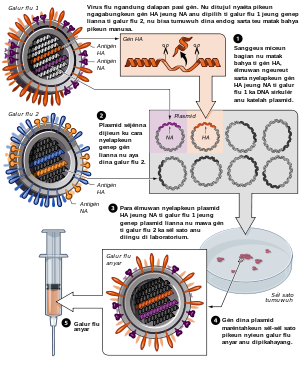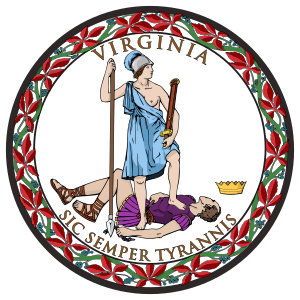
 This week I had the good fortune of meeting with Denise Wilson, RN, PhD, a Maori New Zealand nurse and Director of the Taupua Waiora Centre for Māori Health Research at AUT School of Public Health and Psychosocial Studies here in Auckland. She talked about her work with cultural safety in New Zealand.
This week I had the good fortune of meeting with Denise Wilson, RN, PhD, a Maori New Zealand nurse and Director of the Taupua Waiora Centre for Māori Health Research at AUT School of Public Health and Psychosocial Studies here in Auckland. She talked about her work with cultural safety in New Zealand.
Like many indigenous peoples across the world–including our own in North America–Maori cultural conceptions of health and well-being tend to be much more holistic and less individualistic than mainstream Western ones. As Ms. Wilson explained, for most Maori patients she has worked with (clinically and in research), spirituality and connection with their land and extended family are the most important aspects of health. The Maori word for land, Whenua, also means placenta: it is what nourishes you. The history of colonialization, and being displaced from ancestral lands, have had profound negative effects on Maori health and well-being.
The term ‘cultural safety’ came from a Maori nursing student, Iriphapeti Ramsden (1946-2003), who in the early 1980’s stood up in class one day and asked something like, “We talk about patient safety, physical safety, and ethical safety, but what about cultural safety?” She was specifically referring to the difficulties Maori patients and their families (as well as Maori nursing students such as herslef) have within the Eurocentric health care system in New Zealand. These difficulties continue to contribute to New Zealand’s large health inequities and low representation of Maori nurses and other health care providers in the healthcare system. Ramsden went on to receive her PhD, developing the concept and practice of cultural safety. I discovered that Dr. Ramsden was part of the New Zealand feminist Spiral Collective, which ‘self-published’ Maori writer Keri Hulme’s book The Bone People after it was rejected by all major publishers. The Bone People, of course, went on to win the Man Booker Prize. One of my all-time favorite books, I assigned it as our New Zealand study abroad Common Book this quarter.
According to Denise, a culturally unsafe practice is “anything that diminishes, demeans, or disempowers the cultural identity and well-being of an individual.” A culturally safe or unsafe practice is determined by the patient and the patient’s family (another form of what we term in the U.S. ‘patient-centered care.’) Denise told me that a good ‘cultural safety’ question nurses can ask patients (and their family members) is, “What are things that are really important to you that we need to consider in your care?” Cultural safety includes an emphasis on self-reflection (and action) by the nurse in terms of understanding his or her own cultural and social attitudes that affect their care of patients and communities.
Cultural safety has been taught in New Zealand nursing programs for over twenty years. Since 1992 it has been a requirement for nursing and midwifery registration examinations. What started off as a bicultural focus (Maroi and Pakeha/non-Maori), has been expanded to include things like migrant status, gender/sexual orientation, socio-economic ‘class’ status, and disability. The concept of cultural safety has been adopted by regions in Australia, Canada, and the United States. Denise acknowledged the significant advances that have been made in New Zealand in terms of cultural safety, but she concluded with: “We do have a wee way to go.”
Cultural safety seems to have much in common with my favorite U.S. ‘cultural’ concept of cultural humility, which I have written about in a previous post. Cultural humility was developed as a concept by the African-American physician-nurse duo Tervalon and Murray-Garcia in their 1998 article, “Cultural humility versus cultural competence: a critical distinction in defining physician training outcomes in multicultural education.” (Journal of the Poor and Underserved, 9(2) 117-125.) Since then, both the practice and concept of cultural humility have been further refined. Cultural humility emphasizes: 1) a commitment to lifelong learning and critical self-reflection, 2) recognizing and changing power imbalances, and 3) developing institutional accountability. Take a look at the excellent 30-minute video Cultural Humility: People, Principles and Practices by San Fransisco State professor Vivian Chavez.
Even closer to (my) home of Seattle, the historical roots and “remnants of our unresolved past” of racism and classism are powerfully presented in Shaun Scott’s short documentary A Really Nice Place to Live. In the film, Shaun Scott points out that Seattle is a byproduct of White Western Frontierism. He references historian Richard Drinnon’s work on the ‘Metaphysics of Indian-Hating,” where Drinnon asserts that all of American’s domestic and international race and class dynamics can be traced back to our original interactions with our ‘own’ Indigenous peoples.
We all have a wee way to go in terms of addressing and redressing the effects of racism and classism and all the other ‘isms’ of the world.
******************************
The first photograph here is of the friendly and informative staff at the Alliance Health booth at Auckland’s annual Pasifika Festival, which I attended this past weekend. The staff members were promoting community awareness and prevention of rheumatic heart disease. New Zealand has the highest prevalence of rheumatic heart disease of all industrialized countries, and the highest rates are among Maori. It is a result of untreated ‘strep throat’ and is considered a disease of poverty. One of their community-led ‘interventions’ was the creation of Mama’s House as a culturally-appropriate way to engage the Pasifika community. “Knowing that mothers, sisters and aunties are the first port of call about all matters relating to family health and well-being. After all, ‘Mama knows best’.” It also happened to be International Women’s Day. (And I also had just played ‘Mama-Nurse’ for some of my students who had developed penicillin- resistant strep throat, resulting in some ‘interesting’ interactions with the New Zealand healthcare system, which–like our own–has ‘a wee way to go.’)
The second photo is an interactive game show called “The Survivors,” part of the Maroi section of Wellington’s excellent Te Papa Museum exhibition Slice of Heaven: New Zealand’s Twentieth Century History. As this photo shows, one of the decisions you have to make while playing the game is whether you (as a Maori young woman in the 1970’s) went to the shorter/cheaper nurse aid program or to the longer/more expensive (and heavily Pakeha/’White European’) program to become a Registered Nurse. Guess which choice led to better outcomes, including lifespan for this woman?








